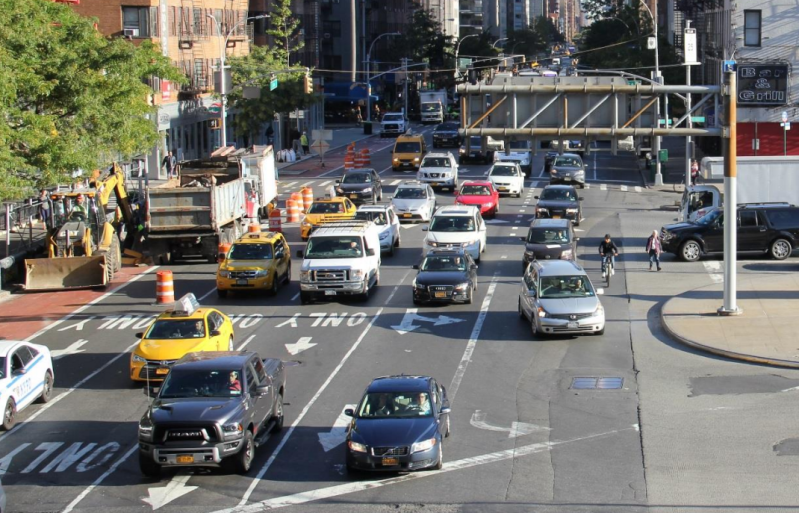[UPDATE] De Blasio Built 20.9 Miles Protected Bike Lanes This Year — Yet Falls Short of Record


The city Department of Transportation revealed on Wednesday that it fell short of its own projection of installing 29.4 miles of protected cycling routes in the city this year — a prediction that would have represented a whopping 18-percent increase from last year’s record 24.9 miles.
In the end, the city built 20.9 miles of protected lanes — or 16 percent fewer than last year’s record.
DOT Commissioner Polly Trottenberg is expected to remind New Yorkers of the scores of protected bike lanes that the city has installed since de Blasio took over on Jan. 1, 2014 — 83 miles, in fact. The number dwarfs other cities.
And Trottenberg will also likely remind cycling advocates that the mayor never committed to break his 2017 record year after year — in fact, last year, the city guaranteed only that it would install at least 10 miles of protected bike lanes every year, meaning this year’s “more than 20 miles” is a significant achievement. Heroic even, when compared to other American cities.
But the number does fall short of what the DOT promised just a few months ago (see chart below), when it said it intended to complete 29.4 miles of protected bike lanes this year.

The shortfall likely resulted from projects that were delayed by the administration, including the fourth phase of Queens Boulevard (2.2 miles), filling a nine-block gap on Second Avenue in Manhattan (.4 miles), constructing a protected lane on Fourth Avenue in Brooklyn (1.3 miles), and completing other projects that have been shelved, though possibly only temporarily. [PDF]
Records are made to be broken — and de Blasio has certainly been eager to play the numbers game when it suits him. He has often boasted of his construction of protected lanes and is proud to defy community boards to bring the life-saving road improvements to neighborhoods across the city.
Queens Boulevard included.
“A protected bike lane along Queens Boulevard is a no-brainer,” he told Brian Lehrer in May, 2016. “We have to make it the Boulevard of Life. We are not going to go backwards.”

To be clear, much of DOT’s year was dominated by time-consuming battles with local community boards and not-in-my-backyard dead-enders who oppose street safety redesigns, despite deep statistical evidence that DOT’s toolbox of narrower roadways, protected bike lanes, pedestrian islands and other improvements dramatically improve safety. The mayor spent political capital by over-ruling the naysayers in Sunnyside, on Morris Park Avenue in the Bronx and in other areas.
Such negotiations often eat up valuable time, DOT officials often say.
Wednesday’s announcement will take place along the new East 26th Street bike lane. Officials from Transportation Alternatives and Lyft, which operates Citi Bike, are expected to be on hand.
The shortfall in protected bike lane installation comes as the city is headed for one of the safest years in history, with fewer than 200 roadway fatalities for the first time. As of the end of October, there were 162 deaths total, 84 of which were pedestrians and 10 of which were cyclists. The drop in cyclists deaths — from 20 in de Blasio’s first year as mayor — comes as ridership is way up, partly due to protected bike lanes.
The news also comes as Council Member Ydanis Rodriguez challenged the mayor last month to build 100 miles of protected bike lanes every year, anticipating the legalization of e-bikes and e-scooters and the 15-month shutdown of the L train, which begins in April. The mayor would not commit to a number, saying, “We obviously are continuing to build a lot of bike lanes and it’s a high priority for the administration. … We have been steadily increasing the number of bike lanes [and] we intend to continue. The number, the amount — we will always report what we think is needed and can be done in the time frame we have, but the directional reality is quite clear under Vision Zero.”
The city has obviously come a long way, as this chart shows:






